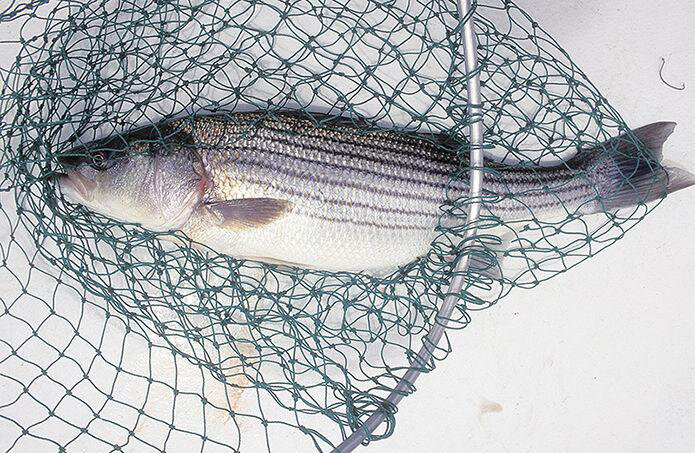New catch limits being considered for striped bass
Acting on the heels of poor striped bass spawning reported again in the Chesapeake Bay, East Coast fisheries managers are considering new catch restrictions aimed at curbing the decline of the highly …

You must be a member to read this story.
Join our family of readers for as little as $5 per month and support local, unbiased journalism.
Already a member? Log in to continue. Otherwise, follow the link below to join.
Please log in to continue |
New catch limits being considered for striped bass
Acting on the heels of poor striped bass spawning reported again in the Chesapeake Bay, East Coast fisheries managers are considering new catch restrictions aimed at curbing the decline of the highly sought-after migratory fish.
At its annual meeting in North Carolina, the Atlantic States Marine Fisheries Commission’s striped bass board voted Oct. 18 to seek public comment on a suite of conservation measures that could be imposed starting in 2024.
The “draft addendum” to the commission’s striped bass fishery management plan lays out options for setting a variety of limits on the number and size of fish that anglers could catch in the Bay and along the coast. It also proposes reducing the commercial harvest quota by up to 14.5 percent, on par with the reduction sought in the recreational fishery.
The commission, which represents state fishery managers from along the coast as well as federal agencies, will hold a series of hearings and take public comments in writing on the plan over the next two months. It intends to choose among the options and take final action at its next meeting in January in Arlington, Va.
The commission vote came less than a week after the Maryland Department of Natural Resources reported that its annual seine survey of state waters for juvenile fish yielded an average of just 1.02 little striped bass per net haul, far below the long-term average of 11.1. That is the second lowest tally since 1957. It also marks the fifth straight year of seriously subpar reproductive success.
The Virginia Institute of Marine Science also reported finding below-average numbers of young striped bass this year in a similar survey it conducts annually in the lower portion of the Bay. It averaged 4.25 fish per net haul, also below that survey’s long-term average of 7.77.
Those reports are significant because the Bay is the primary spawning and nursery ground for 70 percent to 90 percent of the entire Atlantic coast striped bass stock. Also known in the Chesapeake region as rockfish, they are one of the most popular sport and commercial fish all along the East Coast.
Lynn Fegley, DNR’s Fisheries and Boating Director, attributed the poor survey results in Maryland to warm, dry weather in winter and spring for the past several years, which she suggested in a statement may have hindered reproduction.
As adults, striped bass spend much of their lives roaming the coastal Atlantic Ocean but migrate every spring into the Bay and its tributaries to spawn in fresh water. That typically occurs in April and May, usually coinciding with the growth of zooplankton, a major aquatic food source for newly spawned striped bass larvae.
But research has found that winter weather has a significant impact on zooplankton abundance. Cold, wet winters in the Bay improve the odds for striped bass larvae to find high concentrations of their microscopic prey in April and May. Conversely, warm and dry conditions could upset that timing.






